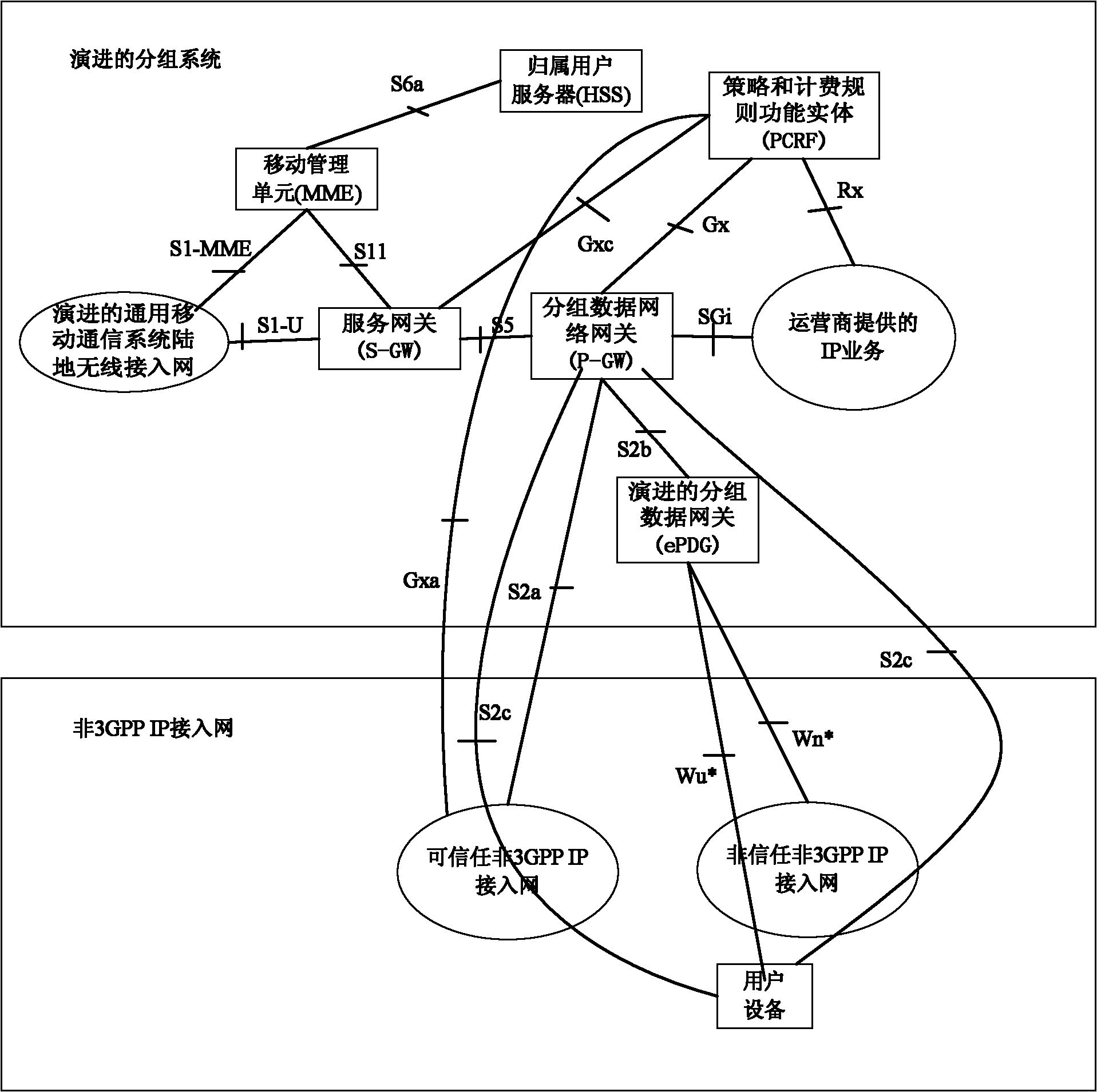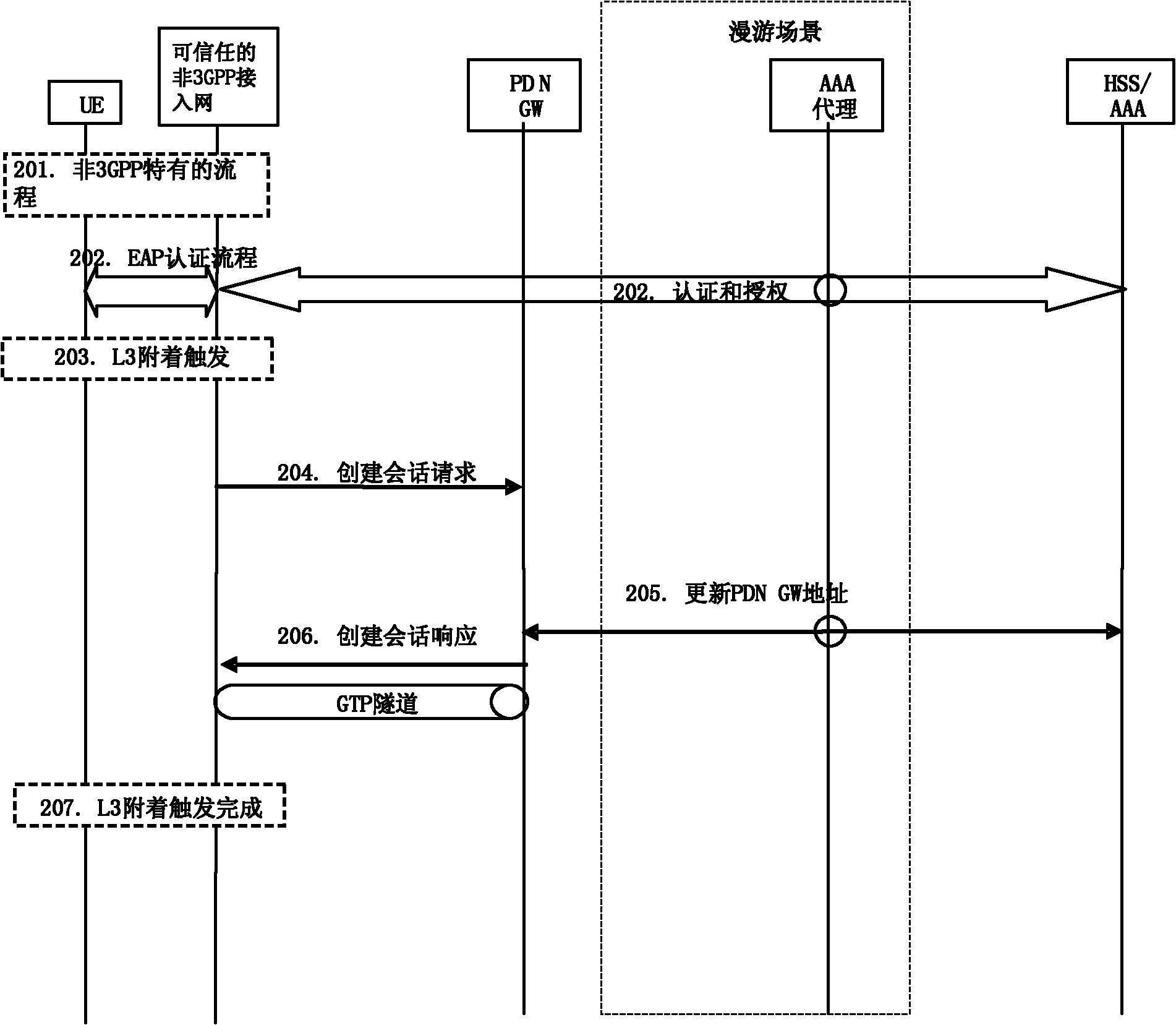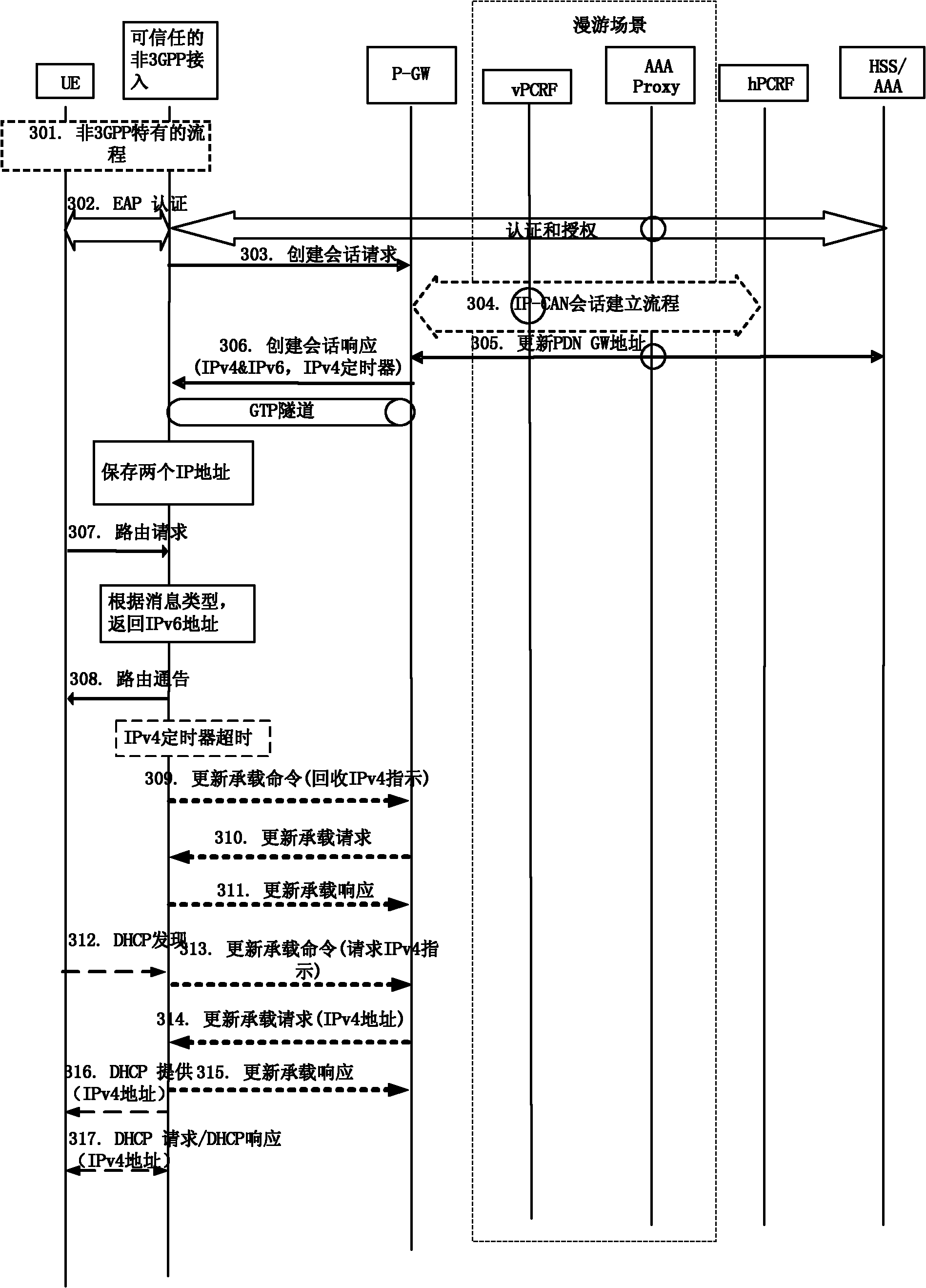Trusted non-3GPP (3rd-Generation Partnership Project) access network element, method for accessing mobile network and detaching method
A mobile network and access network technology, applied in wireless network protocols, connection management, electrical components, etc., can solve problems such as ambiguity
- Summary
- Abstract
- Description
- Claims
- Application Information
AI Technical Summary
Problems solved by technology
Method used
Image
Examples
Embodiment 1
[0096] In this embodiment, it is mainly described that under the premise that the UE subscribes to both IPv4 and IPv6 address types at the same time, for an IPv4 address request, the TNAN network element itself acts as a DHCP server. TNAN network element and P-GW establish a session, P-GW assigns two IP addresses to UE through one session, and TNAN network element temporarily saves the two IP addresses assigned by P-GW to UE; when UE only requests the IPv6 address , the TNAN network element updates the bearer message so that the unused IPv4 address can be reclaimed by the P-GW in time. Such as image 3 shown.
[0097] For the UE only requesting the IPv4 address, there is no need to consider how to deal with the IPv6 address, because the current 3GPP standard believes that the IPv6 address is sufficient, and there is no need to consider how to deal with the unused IPv6 address. The IPv6 address will be in TNAN When the session between the network element and the P-GW is delet...
Embodiment 2
[0111] This embodiment is the same as Embodiment 1. For the IPv4 address request, the TNAN network element itself acts as a DHCP server, and a session is established between the TNAN network element and the P-GW. However, the UE only subscribes to one type of IPv4 address, and the TNAN network element temporarily stores an IPv4 address allocated by the P-GW for the UE; mainly to solve the specific processing when the UE only requests an IPv6 address and the reasonable recycling of unused IPv4 addresses question.
[0112] Step 401: UE and TNAN network element execute non-3GPP specific procedures;
[0113] Steps 402-403: The UE performs 3GPP-based EAP access authentication. During the EAP access authentication process, the TNAN network element obtains that the PDN type subscribed by the UE is IPv4 and IPv6, and the TNAN network element receives the authentication success returned by HSS / AAA message or after receiving the authentication success trigger message returned by the HS...
Embodiment 3
[0122]The difference between this embodiment and Embodiment 1 is that the tunnel session created between the TNAN network element and the P-GW includes two tunnel sessions, one is used to transfer the IPv4 address, and the other is used to transfer the IPv6 address; therefore, when the UE only requests the When using an IPv6 address, the procedure for handling the IPv4 address is also different. Such as Figure 5 shown, including:
[0123] Steps 501-502: Same as steps 301-302.
[0124] Step 503: During the EAP access authentication process, the TNAN network element obtains the PDN type subscribed by the UE as IPv4 and IPv6, and the TNAN network element receives the authentication success message returned by HSS / AAA or receives the authentication success trigger returned by HSS / AAA After the message, a session creation request is initiated to the P-GW, and the message carries that the PDN type subscribed by the UE is IPv4.
[0125] Steps 504-505: Same as steps 304-305.
[0...
PUM
 Login to View More
Login to View More Abstract
Description
Claims
Application Information
 Login to View More
Login to View More - R&D
- Intellectual Property
- Life Sciences
- Materials
- Tech Scout
- Unparalleled Data Quality
- Higher Quality Content
- 60% Fewer Hallucinations
Browse by: Latest US Patents, China's latest patents, Technical Efficacy Thesaurus, Application Domain, Technology Topic, Popular Technical Reports.
© 2025 PatSnap. All rights reserved.Legal|Privacy policy|Modern Slavery Act Transparency Statement|Sitemap|About US| Contact US: help@patsnap.com



